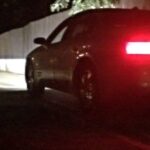For Suzuki XL7 owners looking to diagnose car troubles or monitor vehicle performance, locating the OBD2 port is the first crucial step. This port is your gateway to understanding your car’s health, allowing you to connect with diagnostic tools and scanners. Knowing exactly where to find it will save you time and get you started on the path to resolving any issues.
What is an OBD2 Port and Why is it Important?
OBD2, or On-Board Diagnostics II, is a standardized system that allows you to access your vehicle’s computer. Since the mid-1990s, OBD2 ports have been mandatory in most cars, including the Suzuki XL7. This port is essential because it provides access to a wealth of information about your vehicle’s engine, emissions, and other systems.
Why is this important? The OBD2 port allows mechanics and car owners to:
- Diagnose Check Engine Light Issues: When your “check engine light” illuminates, it signifies a problem. An OBD2 scanner can read the error codes stored in your car’s computer, pinpointing the source of the issue.
- Monitor Vehicle Performance: Beyond error codes, OBD2 scanners can provide real-time data on various parameters like engine temperature, RPM, speed, and sensor readings. This is useful for performance monitoring and preventative maintenance.
- Emissions Testing: OBD2 systems play a crucial role in emissions testing, ensuring vehicles meet environmental standards.
- DIY Repairs and Maintenance: For car enthusiasts and DIY mechanics, the OBD2 port is invaluable for understanding and addressing car problems at home, potentially saving on costly garage visits.
Locating the OBD2 Port in a Suzuki XL7
The good news is that the OBD2 port location is typically standardized, making it relatively easy to find in most vehicles. In the Suzuki XL7, you can generally expect to find the OBD2 port in the driver’s side footwell area.
Here’s a step-by-step guide to locate it:
- Get into the Driver’s Seat: Sit in the driver’s seat of your Suzuki XL7.
- Look Under the Dashboard: Direct your attention to the area underneath the steering wheel and dashboard, near your knees.
- Search for a Connector: The OBD2 port is usually a 16-pin trapezoidal connector. It’s often black, white, or sometimes colored, and is designed to be easily accessible.
- Check Common Locations: In the Suzuki XL7, the OBD2 port is most commonly found:
- Directly under the dashboard, above the pedals. You might need to crouch down and look upwards.
- Slightly to the right or left of the steering column, still under the dash. Feel around if you don’t immediately see it.
- Sometimes, it may be concealed by a small panel or cover. Check for a small, rectangular cover that might need to be opened or removed to access the port.
Visual Aid:
While specific placement can vary slightly by year and trim, imagine looking for a connector roughly in this general area:
[Imagine an image of a driver’s side footwell in a car, with a circle highlighting the area under the dash where the OBD2 port is typically located. Since no image was provided, I will skip inserting an image, but this is where an image would be ideal.]
If you are still having trouble locating the OBD2 port in your Suzuki XL7, consult your vehicle’s owner’s manual. The manual usually contains a diagram or description of the OBD2 port location specific to your model year.
Using Your OBD2 Scanner
Once you’ve located the OBD2 port, using a scanner is straightforward:
- Plug in the Scanner: With your Suzuki XL7’s ignition turned off, plug your OBD2 scanner into the port. Ensure it’s firmly connected.
- Turn Ignition to ‘ON’ (Engine OFF): Turn the ignition key to the “ON” position, but do not start the engine. This powers up the car’s electronics and the OBD2 system.
- Follow Scanner Instructions: Turn on your OBD2 scanner and follow the manufacturer’s instructions. Most scanners will automatically connect to your vehicle’s computer and begin retrieving data or error codes.
- Diagnose and Resolve: Use the information provided by the scanner to diagnose any issues and proceed with necessary repairs or maintenance.
Potential Issues and Troubleshooting
While OBD2 ports are standardized, occasionally you might encounter issues:
- Port Accessibility: In rare cases, the port might be in a slightly less accessible location or more deeply recessed. Take your time and use a flashlight if needed.
- Scanner Compatibility: Ensure your OBD2 scanner is compatible with Suzuki vehicles. Most standard OBD2 scanners will work, but it’s always best to double-check.
- ECU Communication Issues: Though less common with standard OBD2 systems, there might be rare instances where a scanner struggles to communicate with the vehicle’s ECU. This could be due to scanner issues or, in very rare cases, potential ECU protection mechanisms. However, for basic diagnostics on a Suzuki XL7, this is unlikely to be a concern.
By understanding the importance of the OBD2 port and knowing where to find it in your Suzuki XL7, you’re well-equipped to take a proactive approach to vehicle maintenance and diagnostics. This simple port is a powerful tool for keeping your Suzuki XL7 running smoothly for years to come.
